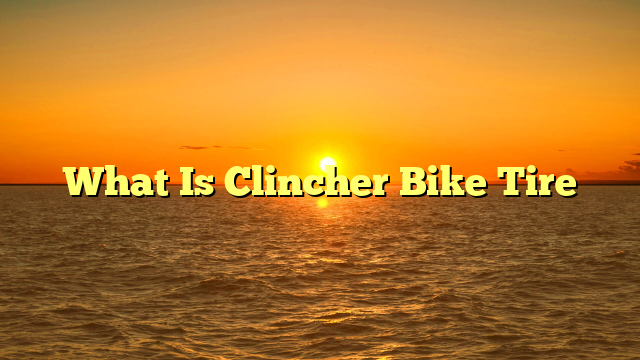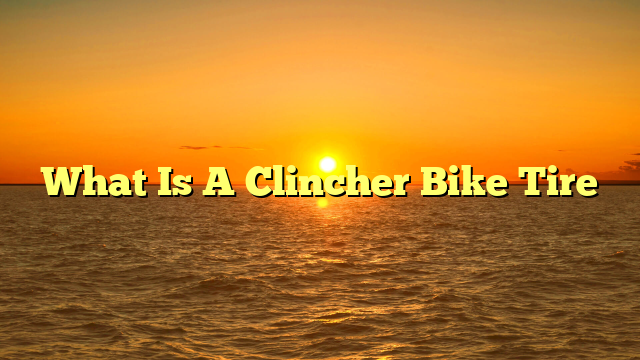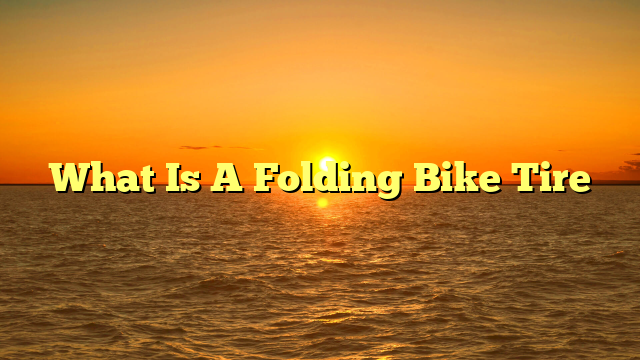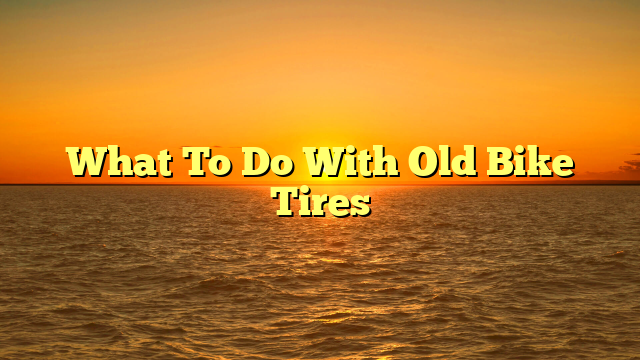Clincher bike tires are a popular choice among cyclists due to their convenience, affordability, and reliability.
These tires consist of three main parts: the bead, the casing, and the tread.
The bead is the inner edge of the tire that hooks onto the rim, while the casing is the fabric layer that provides structure and support to the tire.
The tread is the outer layer that comes into contact with the road and provides grip and traction.
One of the main advantages of clincher tires is their ease of use and maintenance.
They are easy to install and replace and can be repaired on the go with a simple patch kit.
They are also widely available and come in a variety of sizes, making them suitable for different types of bikes and riding styles.
In this article, we will explore the anatomy of a clincher tire, the different types available, how to choose the right size and tips for maintenance and care.
We will also discuss common issues that riders may encounter with clincher tires and how to fix them, as well as whether it is worth upgrading to tubeless tires.
Table of Contents
- 1 Key Takeaways
- 2 Anatomy of a Clincher Bike Tire
- 3 Advantages of Clincher Tires
- 4 Different Types of Clincher Tires
- 5 How to Choose the Right Size of Clincher Tires
- 6 Tips for Maintenance and Care of Clincher Tires
- 7 Common Issues with Clincher Tires and How to Fix Them
- 8 Upgrading to Tubeless Tires: Is it Worth It?
- 9 Frequently Asked Questions
- 10 Conclusion
Key Takeaways
- Clincher bike tires are popular for their convenience, affordability, and reliability.
- Maintenance and care are essential for longevity and optimal performance.
- Regularly checking and adjusting tire pressure is important for safety and performance.
- Upgrading to tubeless tires can enhance ride quality and puncture resistance, but it’s important to consider factors such as cost, maintenance, and puncture resistance.
Anatomy of a Clincher Bike Tire
The anatomy of a clincher bike tire comprises three main components: the bead, the casing, and the tread.
The bead is the part of the tire that fits snugly into the rim of the wheel, providing support and structure for the tire.
It is typically made of steel wire and coated in rubber to prevent wear and tear.
The casing is the body of the tire that sits between the bead and the tread.
It is typically made of layers of nylon or polyester, which provide strength and flexibility to the tire.
The number of layers in the casing determines the tire’s durability and resistance to punctures.
Finally, the tread is the outermost layer of the tire that comes into contact with the road.
It is made of rubber and is designed to provide traction, grip, and durability.
Tire pressure plays a critical role in the performance and safety of a clincher bike tire.
The ideal pressure range for a clincher tire is typically between 80-120 psi, although this may vary depending on the rider’s weight, riding style, and terrain.
Overinflating the tire can cause it to be too hard and increase the likelihood of punctures while underinflating the tire can cause it to be too soft and increase the risk of pinch flats.
Another important factor in tire performance is sidewall construction, which affects the tire’s ability to resist cuts and punctures.
Thicker sidewalls can provide better protection against sharp objects on the road, but they can also increase the weight and rolling resistance of the tire.
Advantages of Clincher Tires
One notable benefit of clincher tires is their ability to be easily repaired and replaced.
This is due to their design, which features a separate inner tube that can be easily removed and replaced when damaged or punctured.
Additionally, clincher tires are widely available and can be found in a variety of sizes and tread patterns, allowing cyclists to choose the tire that best suits their needs.
When it comes to durability versus performance, clincher tires strike a good balance between the two.
While they may not offer the same level of performance as tubular or tubeless tires, they are still capable of providing a smooth ride with good traction.
Furthermore, clincher tires tend to be more cost-effective than other types of tires, making them a good option for cyclists who are on a budget.
However, it is important to note that some cyclists may prefer to invest in higher-end tires for added brand recognition and perceived performance benefits.
Ultimately, the choice between cost-effectiveness and brand recognition is a personal one that should be based on individual preferences and needs.
Different Types of Clincher Tires
Various categories of rubber-made wheels are available in the market, each having diverse tread patterns and sizes, specifically designed to cater to the diverse needs of cyclists.
Among these categories are tubeless and clincher tires.
A clincher tire is the traditional type of bike tire, consisting of an inner tube, a tire, and a rim.
The tire is attached to the rim by means of a bead that hooks onto the rim’s lip.
Clincher tires come in various sizes and patterns and are widely used by road cyclists due to their reliability and affordability.
On the other hand, tubeless tires have gained popularity in recent years due to their puncture resistance and ability to self-seal small punctures.
Tubeless tires do not require an inner tube and instead rely on a sealant that is added to the tire’s interior to prevent air loss.
While tubeless tires are more expensive than clincher tires, they offer a smoother ride and better traction, making them a preferred choice for off-road and mountain biking.
The following table provides an overview of the pros and cons of both clincher and tubeless tires:
| Tire Type | Pros | Cons |
|---|---|---|
| Clincher | Affordable, easy to repair, widely available | Prone to punctures, requires an inner tube |
| Tubeless | Puncture-resistant, self-sealing, offers a smoother ride | More expensive, requires special rims and sealant, difficult to install |
Some of the best brands for clincher tires include Continental, Michelin, and Schwalbe.
These brands offer a variety of sizes and patterns, making it easier for cyclists to find the perfect tire for their bikes.
Ultimately, the choice between clincher and tubeless tires depends on the cyclist’s needs and preferences, as both types have their own advantages and disadvantages.
How to Choose the Right Size of Clincher Tires
To select the appropriate size of rubber wheels for a bicycle, one must consider several factors.
The rim width is a crucial factor to consider when choosing the right size of a clincher tire.
It is essential to ensure that the tire width matches the rim width for optimum performance.
A tire that is too narrow for a rim will not provide enough stability, while a tire that is too wide will not fit the rim and may cause punctures or damage to the tire.
Another factor to consider when selecting the right size of clincher tire is the frame clearance.
The clearance refers to the space between the tire and the frame of the bike.
It is crucial to ensure that the tire fits comfortably within the frame clearance to avoid any rubbing or other issues.
Lastly, the intended use of the bike is a crucial factor when selecting the appropriate size of a clincher tire.
Different types of bikes require specific tire sizes, and it is essential to choose the right tire size that suits the intended use of the bike.
It is also important to follow the tire pressure recommendations to ensure safety and optimum performance.
Choosing the right size of clincher tire is essential for optimum performance and safety while riding a bike.
It is necessary to consider the rim width, frame clearance, and intended use of the bike to select the appropriate size of tire.
Following the tire pressure recommendations is also crucial to ensure safety and optimum performance.
Tips for Maintenance and Care of Clincher Tires
Proper maintenance and care are crucial for ensuring the longevity and optimal performance of rubber wheels on a bicycle.
Clincher tires, in particular, require special attention due to their design, which makes them more susceptible to punctures and damage.
To ensure that your clincher tires remain in top condition, here are some tips for maintenance and care:
- Regularly inspect your tires for signs of wear and tear, such as cuts, cracks, or bulges.
Replace the tires if you notice any of these signs as they can compromise the tire’s structural integrity and pose a safety risk.
- Clean your tires regularly to remove dirt, debris, and other contaminants that can cause damage to the rubber.
Use a mild detergent and warm water to clean the tires, and avoid using harsh chemicals or abrasive materials that can scratch or damage the rubber.
- Proper storage is also essential for maintaining your clincher tires.
Store them in a cool, dry place away from direct sunlight and heat sources, and avoid stacking them on top of each other.
Additionally, make sure to store them away from any sharp objects or tools that can puncture or damage the rubber.
By following these tips, you can ensure that your clincher tires remain in top condition and provide optimal performance and safety.
Regular maintenance and care can also help prolong the lifespan of your tires, saving you money in the long run.
Common Issues with Clincher Tires and How to Fix Them
One common issue that can arise with rubber wheels on a bicycle is damage to the inner tube, which can result in a flat tire and disrupt the rider’s journey.
This issue can often be caused by improper tire pressure, as well as punctures from sharp objects on the road.
To prevent these issues, it is important to maintain proper tire pressure and be prepared to quickly repair any punctures.
To maintain the optimal performance of clincher tires, it is recommended to regularly check and adjust tire pressure as needed.
Underinflated tires can increase the risk of punctures and also cause the tire to wear more quickly.
On the other hand, overinflated tires can decrease the tire’s grip on the road, leading to reduced control and stability for the rider.
Additionally, it is important to carry a repair kit with you on rides, including items such as tire levers, patches, and a pump, to quickly repair any punctures that may occur while on the road.
By following these tips, cyclists can ensure a smooth and safe ride on their clincher tires.
| Issue | Cause | Solution |
|---|---|---|
| Flat tire | Damage to inner tube | Replace or patch inner tube |
| Punctures | Sharp objects on road | Carry repair kit to fix punctures quickly |
| Improper tire pressure | Under or overinflation | Regularly check and adjust tire pressure as needed |
| Wear and Tear | Extended use | Replace tires when they begin to show signs of wear |
Utilizing the table above can help to emphasize the importance of proper maintenance and quick repairs when dealing with issues related to clincher tires.
By being aware of common issues and having the necessary tools on hand to address them, cyclists can ensure a safe and enjoyable riding experience.
Upgrading to Tubeless Tires: Is it Worth It?
Moving on from the common issues with clincher tires, let’s explore a potential solution to some of these issues: upgrading to tubeless tires.
This option may be worth considering for those who want to enhance their ride quality and reduce the likelihood of punctures and flats.
Firstly, it’s important to understand the difference between tubeless and clincher tires.
Tubeless tires don’t require an inner tube, as the tire itself creates an airtight seal against the rim.
This eliminates the risk of pinch flats and reduces the likelihood of punctures.
On the other hand, clincher tires rely on an inner tube to hold the air pressure and attach to the rim.
While they are easier to install and repair, they are more vulnerable to punctures and pinch flats.
So, is upgrading to tubeless tires worth it?
Here are some factors to consider:
- Cost of upgrading: Upgrading to tubeless tires can be expensive, as it requires new rims and tires.
However, it can save money in the long run by reducing the need for frequent replacements and repairs.
- Ride quality: Tubeless tires provide a smoother ride, as they can be run at lower pressures without the risk of pinch flats.
This also improves traction and handling, especially on rough terrain.
- Puncture resistance: Tubeless tires are less vulnerable to punctures and are able to seal small punctures on their own.
This can be a significant advantage for those who frequently ride on rough or unpredictable terrain.
- Maintenance: While tubeless tires require less maintenance in terms of puncture repairs, they do require regular sealant checks and replacements.
This can be a minor inconvenience for some riders.
Frequently Asked Questions
Can I use clincher tires on a tubeless rim?
Clincher tires can be used on tubeless rims if they are tubeless compatible and the tire pressure is within the manufacturer’s recommendations.
It is important to ensure proper installation and maintenance to prevent air leaks and ensure optimal performance.
Are clincher tires more prone to punctures than other types of tires?
Clincher tires are not more prone to punctures than other types of tires, as puncture-prevention techniques are available for all tire types.
Durability comparisons between tire types vary depending on the specific tire brand and model.
How often should I replace my clincher tires?
The lifespan of clincher bike tires varies based on factors such as usage frequency, road conditions, and tire quality.
Signs of wear, such as cracks or thinning tread, indicate a need for replacement.
Choosing the right tire type can also affect longevity.
Do I need special tools to change a clincher tire?
Tire removal and installation of clincher tires require specific tools such as tire levers, a valve core remover, and a floor pump.
These tools aid in the removal and installation of the tire bead onto the rim.
Can I use different brands of tires and tubes on my clincher wheelset?
It is recommended to use tires and tubes that are compatible with your clincher wheelset.
Some brands may have different tubeless compatibility and tire pressure recommendations, so it is important to check and follow the manufacturer’s guidelines.
Conclusion
The Clincher bike tire is a popular choice for its convenience, versatility, and affordability.
Its simple design consists of an outer tire, an inner tube, and a rim that holds them both in place.
Clincher tires are easy to install and remove, and they come in a variety of sizes and tread patterns to accommodate different riding styles and conditions.
One of the biggest advantages of clincher tires is their accessibility.
They can be found at most bike shops and online retailers, and they are generally less expensive than other types of tires.
Clinchers also offer a good balance of durability, performance, and comfort, making them a reliable choice for most riders.
When choosing clincher tires, it is important to consider factors such as tire width, tread pattern, and puncture protection.
Proper maintenance and care, such as checking tire pressure and inspecting for damage, can help prolong the life of clincher tires and prevent issues such as flats and blowouts.
In some cases, upgrading to tubeless tires may be a worthwhile investment for riders seeking even greater performance and convenience.
Overall, the clincher bike tire is a tried and true option for riders of all levels.
With its straightforward design, wide availability, and reasonable cost, it is a reliable choice for commuting, training, and recreational riding.
By selecting the right size and type of clincher tire and taking proper care of it, riders can enjoy many miles of smooth, hassle-free cycling.







![Can You Put Gravel Tires On a Road Bike? [Pros & Cons] Can You Put Gravel Tires On a Road Bike](https://www.ridefoster.com/wp-content/uploads/2022/11/Can-You-Put-Gravel-Tires-On-a-Road-Bike.webp)